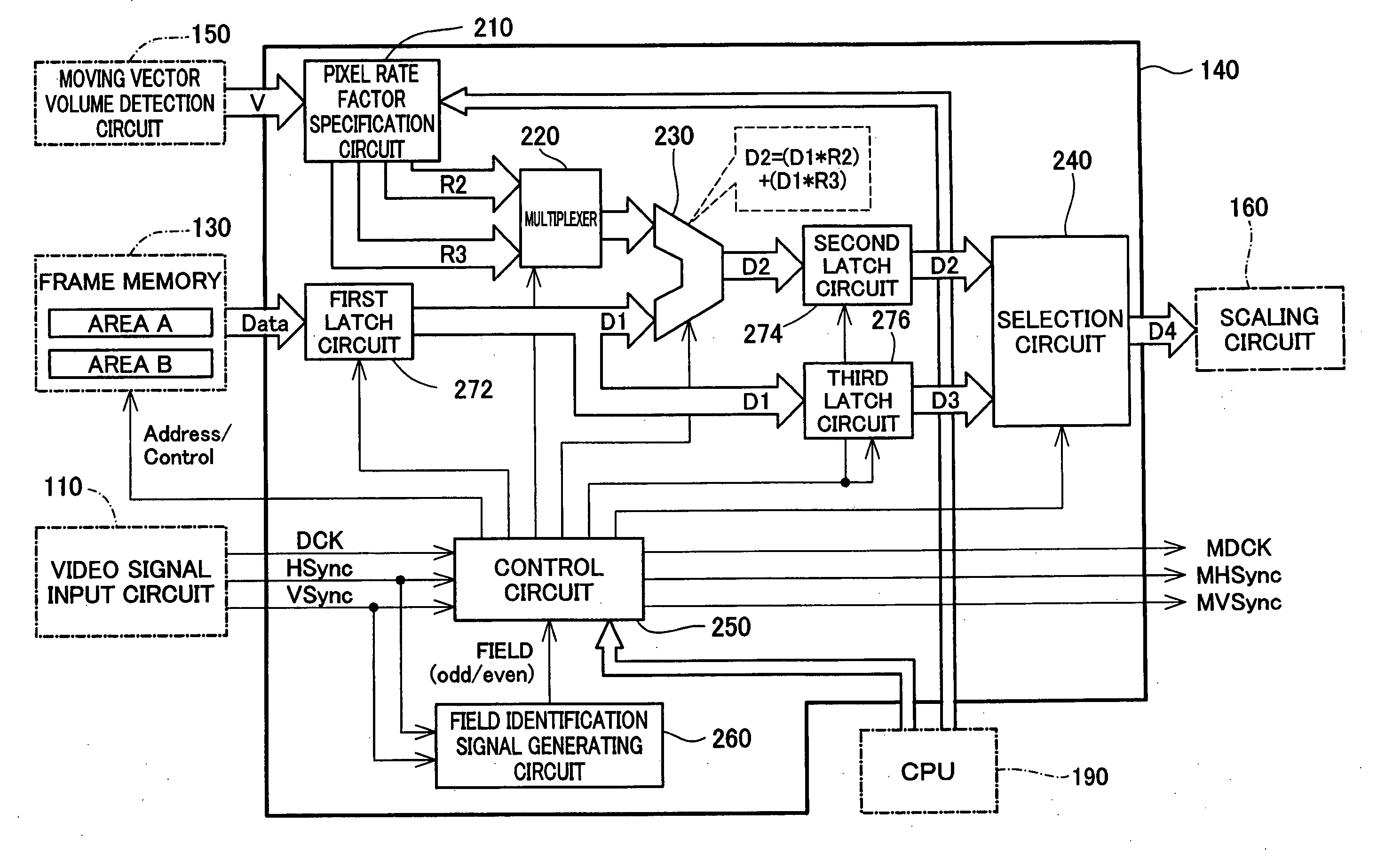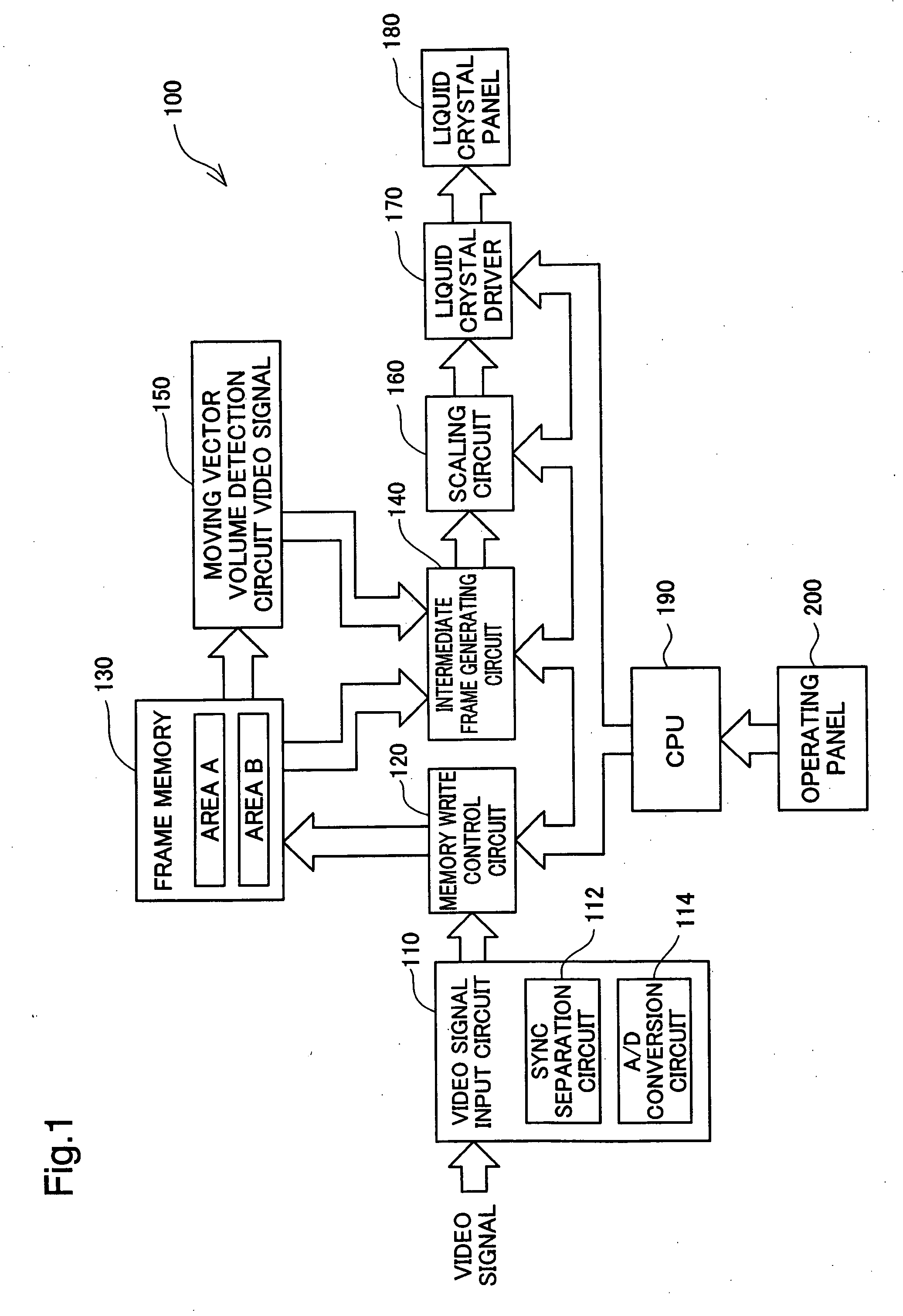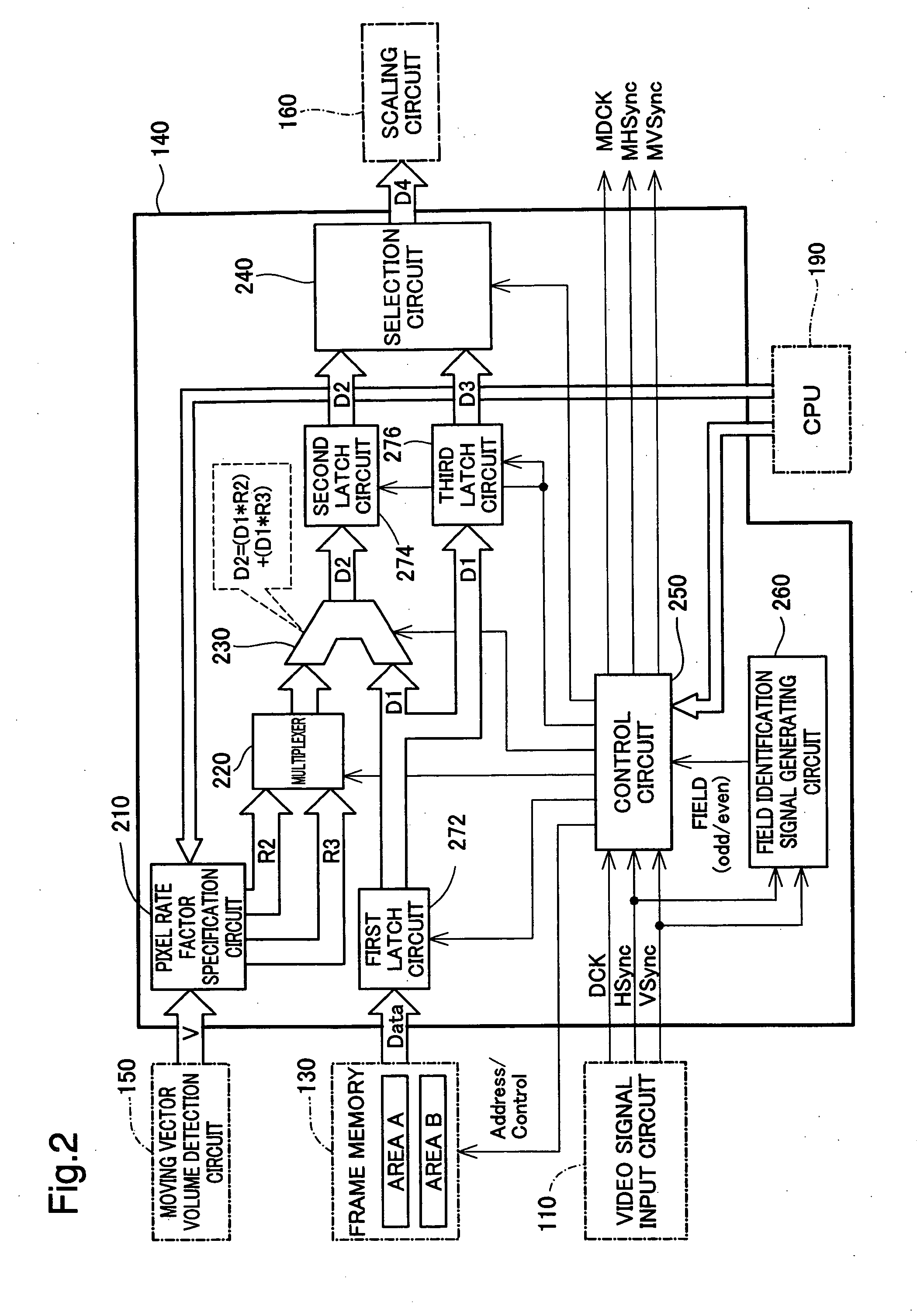Moving image display device and method for moving image display
a technology of moving image and display device, which is applied in the direction of television system, color signal processing circuit, instruments, etc., can solve the problems of flicker (blinking) on the overall screen, flicker only in the moving object part, and felt stress while viewing, so as to prevent flicker and smooth display of moving image
- Summary
- Abstract
- Description
- Claims
- Application Information
AI Technical Summary
Benefits of technology
Problems solved by technology
Method used
Image
Examples
first embodiment
[0037] A. First Embodiment [0038] (A-1) Hardware Configuration of Projector
[0039]FIG. 1 is a block diagram showing the hardware configuration of a projector 100 in one embodiment of the moving image display device of the invention. The projector 100 has the function of displaying a moving image with at least a 2-fold frame rate of an original moving image. A concrete arrangement for enabling the video display with at least the 2-fold frame rate will be described later in detail.
[0040] As illustrated, the projector 100 of the embodiment includes a video signal input circuit 110, a memory write control circuit 120 connected with the video signal input circuit 110, a frame memory 130 connected with the memory write control circuit 120, a moving vector volume detection circuit 150 connected with the frame memory 130, an intermediate frame generating circuit 140 connected with the frame memory 130 and the moving vector volume detection circuit 150, a scaling circuit 160 connected with ...
second embodiment
[0077] B. Second Embodiment
[0078] The first embodiment described above generates one intermediate frame image between each pair of existing frame images and displays a moving image at the 2-fold cycle of the frame rate of the original moving image. A second embodiment described below generates two intermediate frame images between each pair of existing frame images and displays a moving image at a 3-fold cycle of the frame rate of the original moving image.
[0079]FIG. 7 shows visual representation of a moving image formed on the liquid crystal panel 180 in the second embodiment. As shown in the upper row and the middle row of FIG. 7, in the second embodiment, when the memory write control circuit 120 sequentially writes frame image data of frames (n−1), (n), and (n+1) into the frame memory 130, the control circuit 250 reads out the frame image data five consecutive times at a 3-fold cycle of the frame rate of the original moving image. Alternate output of corresponding pixels attain...
third embodiment
[0083] C. Third Embodiment
[0084] The second embodiment described above generates two intermediate frame image between each pair of existing frame images and displays a moving image at the 3-fold cycle of the frame rate of the original moving image. A third embodiment described below generates three intermediate frame images between each pair of existing frame images and displays a moving image at a 4-fold cycle of the frame rate of the original moving image.
[0085]FIG. 8 shows visual representation of a moving image formed on the liquid crystal panel 180 in the third embodiment. As shown in the upper row and the middle row of FIG. 8, in the third embodiment, when the memory write control circuit 120 sequentially writes frame image data of frames (n−1), (n), and (n+1) into the frame memory 130, the control circuit 250 reads out the frame image data seven consecutive times at a 4-fold cycle of the frame rate of the original moving image. Alternate output of corresponding pixels attain...
PUM
 Login to View More
Login to View More Abstract
Description
Claims
Application Information
 Login to View More
Login to View More - R&D
- Intellectual Property
- Life Sciences
- Materials
- Tech Scout
- Unparalleled Data Quality
- Higher Quality Content
- 60% Fewer Hallucinations
Browse by: Latest US Patents, China's latest patents, Technical Efficacy Thesaurus, Application Domain, Technology Topic, Popular Technical Reports.
© 2025 PatSnap. All rights reserved.Legal|Privacy policy|Modern Slavery Act Transparency Statement|Sitemap|About US| Contact US: help@patsnap.com



